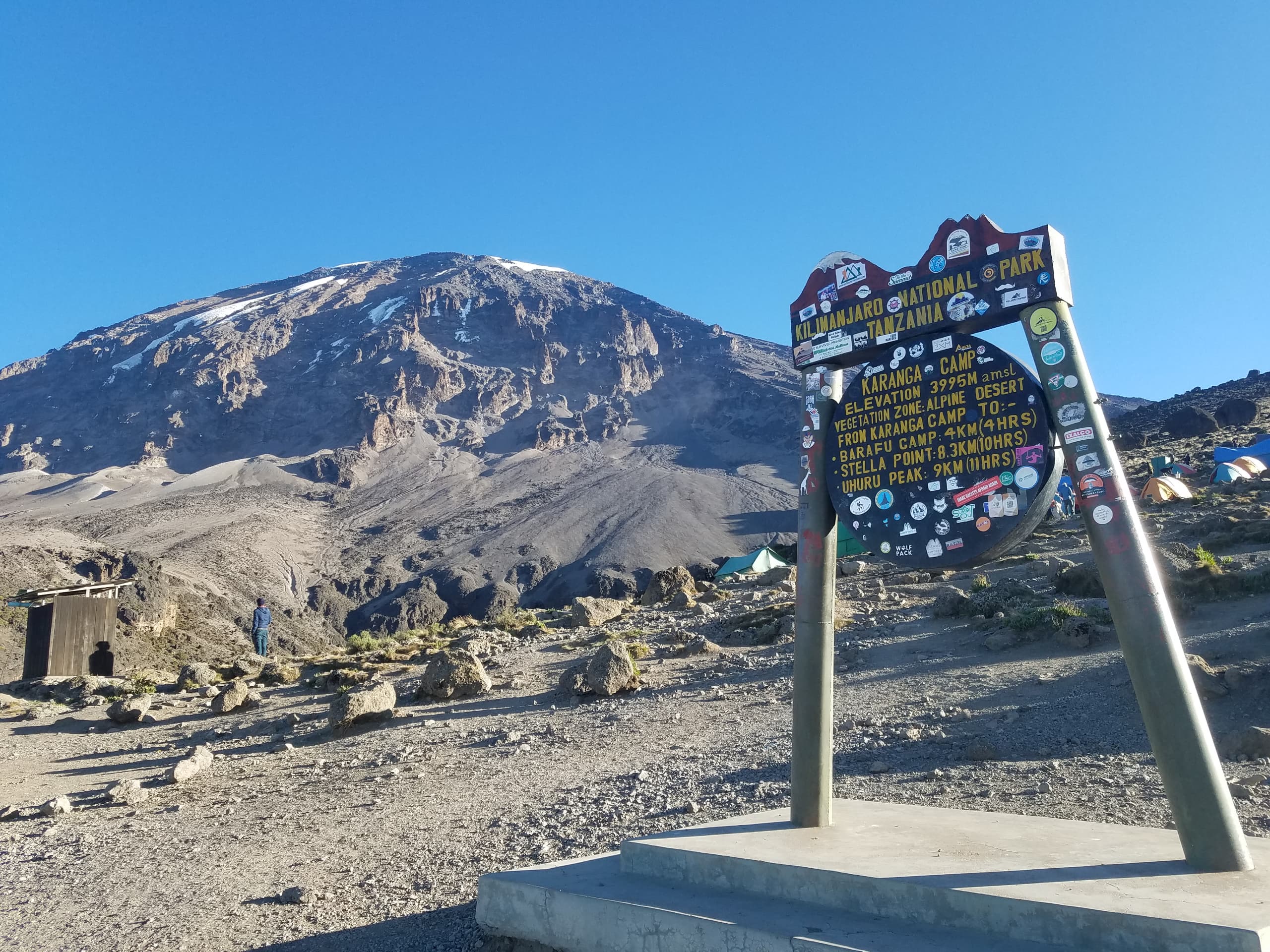
Climbing Kilimanjaro is achievable but comes with unique challenges such as altitude sickness, unpredictable weather, and physical exhaustion. Proper planning ensures safety.
Mount Kilimanjaro stands at 5,895 meters (19,341 feet) above sea level, making it the highest free-standing mountain in the world. Although it’s considered a non-technical climb, meaning you won’t need ropes or technical climbing equipment, the journey isn’t without risks. Altitude sickness, unpredictable weather, and physical endurance are major concerns. One of the most significant dangers is rapid altitude gain. Unlike other high-altitude climbs that may involve acclimatization stops over weeks, Kilimanjaro climbs typically last between 5–9 days, making gradual adaptation challenging. This rapid ascent increases the risk of altitude-related illnesses such as Acute Mountain Sickness (AMS), High Altitude Pulmonary Edema (HAPE), and High Altitude Cerebral Edema (HACE), which can be fatal if not managed properly.
Weather variability adds another layer of difficulty. Kilimanjaro has five ecological zones, each with distinct weather patterns. Climbers may start their journey in a hot, humid rainforest and end up battling freezing temperatures at the summit. Without proper clothing and gear, hypothermia and frostbite become real threats. Additionally, physical endurance plays a significant role. The trek demands stamina, strength, and mental resilience. Many underestimate this, thinking that the lack of technical climbing means an easy path. However, the persistent uphill walk, harsh terrain, and thin air test even the fittest adventurers. To overcome these challenges, thorough preparation, choosing the right route, traveling with experienced guides, and pacing are key factors. The question isn’t whether Kilimanjaro is safe—it’s whether you’re prepared to approach it safely.
Altitude sickness is the most common risk when climbing Kilimanjaro. As you ascend, oxygen levels drop, affecting how your body functions. Symptoms like headaches, dizziness, nausea, and fatigue are common. In severe cases, altitude sickness progresses to HAPE and HACE, both potentially fatal without immediate descent. Managing altitude sickness starts with understanding your body’s limits. Climbing slowly, choosing longer routes like Lemosho or Northern Circuit, and staying hydrated are critical. The body needs time to adjust to lower oxygen levels, and rushing the process increases risks.
Guides continuously monitor climbers for altitude sickness symptoms. Pulse oximeters measure blood oxygen levels, and daily health checks are routine on reputable tours. If symptoms worsen, the only remedy is descent—there are no shortcuts. Importantly, mental strength complements physical preparedness. Altitude sickness doesn’t discriminate; even experienced climbers can suffer. Listening to your body, communicating symptoms to guides, and resisting the urge to push through illness are vital decisions that ensure safety.
Kilimanjaro’s weather is unpredictable. Climbers can face blistering heat, rain, snow, and sub-zero temperatures—all in one trek. Such fluctuations challenge even the most prepared. The best times to climb are January to March and June to October. These periods are the driest, reducing risks associated with slippery trails and hypothermia. However, even during these months, conditions can change rapidly, requiring adaptable gear. Essential gear includes thermal layers, waterproof clothing, and sturdy boots. Hypothermia risks escalate at higher altitudes, particularly at night. Proper layering traps heat while allowing sweat to escape, preventing moisture buildup that leads to cold stress.
Besides cold, UV exposure is intense due to thinner air at altitude. Sunscreen, sunglasses, and brimmed hats are non-negotiable. Without them, climbers risk severe sunburn and snow blindness, conditions that can derail an entire expedition. Ultimately, weather-related risks on Kilimanjaro are manageable with preparation, flexible planning, and the right equipment.
Physical preparation determines whether Kilimanjaro is a safe climb. Although no technical skills are required, the trek tests cardiovascular endurance, leg strength, and mental resilience. Pre-climb training should include aerobic exercises like hiking, cycling, and swimming. These activities build lung capacity and stamina—crucial for low-oxygen environments. Strength training focusing on legs and core stability is equally important, helping climbers handle steep ascents and long daily walks.
Training hikes on uneven terrain prepare your body for Kilimanjaro’s rocky paths. Mental preparation is equally vital. Long hours of walking in harsh conditions require determination and a positive mindset. Those with pre-existing conditions should consult doctors. Kilimanjaro’s altitude can exacerbate heart and lung conditions. Ensuring you’re in optimal health before the climb adds an essential layer of safety.
The route you choose dramatically impacts safety. Kilimanjaro offers several routes, each with different acclimatization profiles and success rates. The Marangu Route, also known as the "Coca-Cola" route, is popular for its hut accommodations but has a lower success rate due to its shorter acclimatization period. The Machame and Lemosho routes, while longer, offer better acclimatization opportunities and higher success rates. The Northern Circuit Route, the longest, offers the best acclimatization and safety profile, though it’s more expensive.
Selecting a route aligned with your fitness level and available time is key. Shorter routes may tempt climbers but often increase the risk of altitude sickness due to rapid ascents. Longer routes allow the body to adjust, significantly boosting safety and summit success.
Yes, Kilimanjaro is suitable for beginners with proper training and preparation. Choosing a longer route helps with acclimatization.
Depending on the route, the climb takes between 5 to 9 days. Longer routes increase summit success rates.
Success rates vary by route. Shorter routes have lower success rates (50-60%), while longer ones like Lemosho have up to 90% success.
No technical skills are needed, but cardio and endurance training improve your chances of completing the trek successfully.
While not entirely preventable, acclimatization, hydration, and slow ascent greatly reduce the risk of altitude sickness.
While Kilimanjaro presents challenges, it is a rewarding experience for those who prepare adequately. With proper planning, expert guidance, and attention to safety measures, climbers can successfully reach the summit and enjoy breathtaking views from Africa’s highest point.